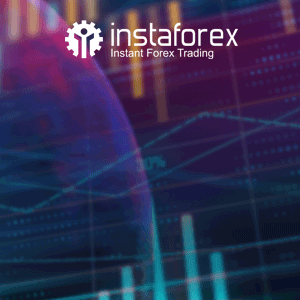Luxury fashion, characterized by its exclusivity, craftsmanship, and status, has always been at the forefront of innovation and creativity. In recent years, the advent of blockchain technology and the rise of Non-Fungible Tokens (NFTs) have begun to revolutionize various industries, including fashion.
NFTs, unique digital assets verified using blockchain, are making significant inroads in the high fashion sector, offering new ways to authenticate, trade, and experience luxury fashion.
The Intersection of Fashion and Technology
Historical Perspective
Fashion and technology have always been intertwined. From the invention of the sewing machine in the 19th century to the development of synthetic fibers in the 20th century, technological advancements have continually shaped the fashion industry. Today, the digital age brings new opportunities for innovation.
Technological Advancements in Fashion
Recent technological advancements such as 3D printing, augmented reality (AR), and artificial intelligence (AI) have begun to transform fashion design, production, and retail. Blockchain technology and NFTs are the latest additions to this technological evolution, promising to reshape the luxury fashion landscape.
Understanding NFTs
What are NFTs?
NFTs are unique digital tokens that represent ownership of a specific item or piece of content, verified through blockchain technology. Unlike cryptocurrencies such as Bitcoin, NFTs are not interchangeable, as each one holds a distinct value and identity.
How NFTs Work
NFTs operate on blockchain networks like Ethereum. When an NFT is created, or "minted," it is given a unique identifier that distinguishes it from any other token. This identifier is recorded on the blockchain, ensuring its authenticity and ownership history.
The Market for NFTs
The NFT market has exploded in recent years, with digital art, collectibles, and even virtual real estate being sold for millions of dollars. This market's growth has drawn the attention of the fashion industry, which sees potential in leveraging NFTs for luxury fashion items.
NFTs in High Fashion
Early Adopters in the Fashion Industry
Some high fashion brands have already started experimenting with NFTs. For example, Gucci and Louis Vuitton have launched digital fashion collections and NFT-based experiences, marking their entry into this burgeoning space.
Case Studies of NFT Fashion Collections
A notable example is the collaboration between digital fashion house The Fabricant and artist Johanna Jaskowska, who created a digital dress sold as an NFT for $9,500. This sale highlighted the potential for high-value transactions in the NFT fashion market.
Benefits of NFTs for Luxury Fashion
Authenticity and Provenance
One of the primary benefits of NFTs is their ability to guarantee the authenticity and provenance of luxury items. Blockchain's immutable ledger ensures that each item's history is traceable and verifiable, reducing the risk of counterfeiting.
Exclusivity and Scarcity
NFTs can enhance the exclusivity of luxury fashion items. By limiting the number of NFTs available for a particular item, brands can create a sense of scarcity and exclusivity, driving demand among consumers.
Enhanced Consumer Engagement
NFTs offer new ways for brands to engage with consumers. Virtual fashion shows, digital wearables, and interactive experiences can be created using NFTs, providing consumers with unique and immersive experiences.
Challenges and Criticisms
Environmental Concerns
One major criticism of NFTs is their environmental impact. The process of minting and trading NFTs consumes significant energy, contributing to carbon emissions. This issue has sparked debates about the sustainability of NFTs in the fashion industry.
Market Volatility
The NFT market is highly volatile, with prices fluctuating wildly. This volatility can pose risks for both brands and consumers, making it essential for participants to understand the market dynamics.
Intellectual Property Issues
NFTs also raise questions about intellectual property rights. Determining the ownership and rights to digital fashion items can be complex, necessitating clear legal frameworks and guidelines.
Innovative Uses of NFTs in Fashion
Virtual Fashion Shows
Brands can use NFTs to host virtual fashion shows, where digital clothing is showcased and sold as NFTs. These shows can reach a global audience, offering a new way to present collections.
Digital Wearables
Digital wearables are another innovative use of NFTs. These items can be worn in virtual worlds and augmented reality environments, providing a new dimension to fashion.
Fashion Gaming Integration
NFTs can be integrated into fashion gaming, allowing players to purchase, trade, and wear digital fashion items within games. This integration offers new revenue streams and marketing opportunities for fashion brands.
The Role of Major Fashion Brands
How Big Names are Leveraging NFTs
Major fashion brands are increasingly exploring NFTs to stay ahead in the digital age. Brands like Dolce & Gabbana and Prada have launched NFT collections, blending their rich heritage with cutting-edge technology.
Collaborations and Partnerships
Collaborations between fashion brands and tech companies are becoming more common. These partnerships can result in innovative NFT projects that push the boundaries of both industries.
Consumer Perspectives
Changing Consumer Behavior
The rise of NFTs is changing consumer behavior. Digital natives, in particular, are drawn to digital ownership and willing to invest in virtual fashion items.
The Appeal of Digital Ownership
Digital ownership offers a new form of status and identity. Owning a unique NFT from a prestigious fashion brand can be a symbol of wealth and exclusivity, much like owning a physical luxury item.
The Future of NFTs in High Fashion
Trends to Watch
Several trends are emerging in the NFT fashion space, including the rise of digital fashion influencers, increased integration with AR and VR, and the growth of virtual fashion marketplaces.
Predictions for the Next Decade
In the next decade, NFTs will become a standard part of the luxury fashion industry. As technology evolves and consumer acceptance grows, NFTs will play a crucial role in defining the future of fashion.
Conclusion
The fusion of luxury fashion and blockchain technology through NFTs creates exciting new possibilities. From enhancing authenticity to offering unique consumer experiences, NFTs are poised to transform the high fashion industry. As brands continue to innovate and explore this digital frontier, the future of fashion looks more dynamic and interconnected than ever.
Disclaimer: The information provided in this article is for educational and informational purposes only and should not be construed as financial or investment advice. The opinions expressed are those of the author and do not necessarily reflect the views of any organizations or entities mentioned. Investing in NFTs carries risks, including the potential loss of principal. Always conduct your own research and consult with a qualified financial advisor before making any investment decisions.















0 Comments